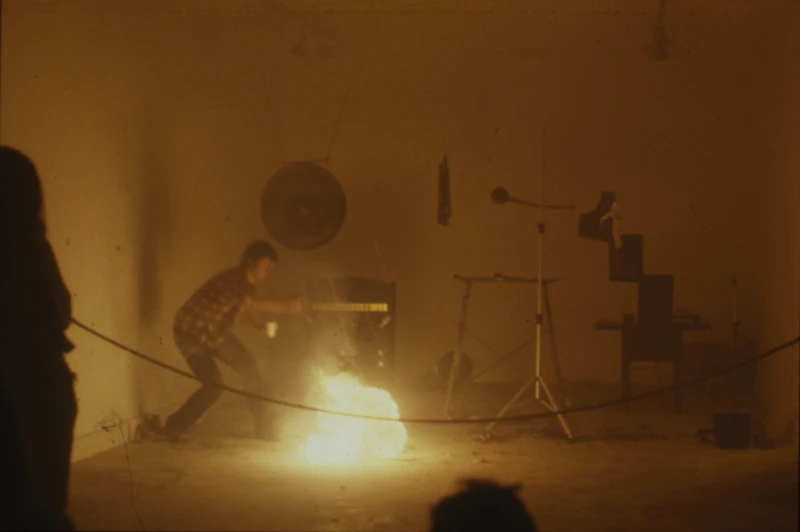Stephen Cripps: In Real Life
22 Oct 2022-8 Jan 2023


Stephen Cripps: In Real Life is the first major presentation of the work of Stephen Cripps at a UK institution. Cripps (1952-1982) was a sculptor and performance artist whose ambition was to make works that existed in their most complete form at the moment of their creation – in real life.
His practice was transitory and multisensory, incorporating pyrotechnics and explosives; mechanical and kinetic objects constructed from found or salvaged materials as well as sound recordings ranging from supersonic aircraft and barking dogs to car horns and hair brushing. Audiences at his gallery installations and performances were more active participants than passive observers to work that was highly experimental and, at times, dangerous. “As soon as I have rehearsed, everything’s gone. By experimenting at each performance, I am seeing [the work] for the first time along with the audience.”
The still and moving image documentation of these performances, as well as the audio work recorded on cassette, convey the impact of Cripps’ work, and capture the atmosphere of the events. His 100s of drawings, collages and other works on paper have a graphic power and immediacy that directly communicate Cripps’ enquiring and, at times, frenetic thinking that brought together ideas about art, machines, urban life, war, gardens, aeronautics and much more. Cripps often annotated his drawings with details of the materials for construction or instructions for activation. These drawings were not necessarily created as artworks in themselves, and certainly not with an art market in mind, and for this reason are unselfconsciously fresh and seductive.
In Real Life comprises over 250 works on paper, films, documents, and audio recordings that create an in-depth and extensive picture of Cripps’ artistic practice. The material is selected principally from the Archive of Sculptors’ Papers held at Henry Moore Institute, part of Leeds Museums and Galleries, with additional material from the Acme archive. Drawings and photographs of early sculptures, like Machine for Birds, installed on the Serpentine Gallery lawn show Cripps’ debt to Tinguely. Live performances and kinetic sculptural machine installations such as Burning Xerox Machine and Roundabout for a Crashing Helicopter, as well as a range of pyrotechnic experiments at The Acme Gallery and at other venues are also represented. Cripps’ enormously rich store of ideas meant that he was not confined to what was practical and achievable with his limited resources. Many of the drawings are for works that are epic in their ambition but, for Cripps, are nonetheless more than worthy of his graphic exploration. Some of these unrealised projects include Machine Carrying Hot Air Balloon, Notes on a Dance for Jets and Helicopters, or Underwater Ballet.
For Cripps, to live life fully and to grasp the reality of the moment was not something that required introspection and contemplation, but action. He was a passionate and generous artist who was fascinated with exploring extreme sensation and testing the very limits of experience. “There’s a great fear about explosives as a destructive element, I use them in a creative way.”